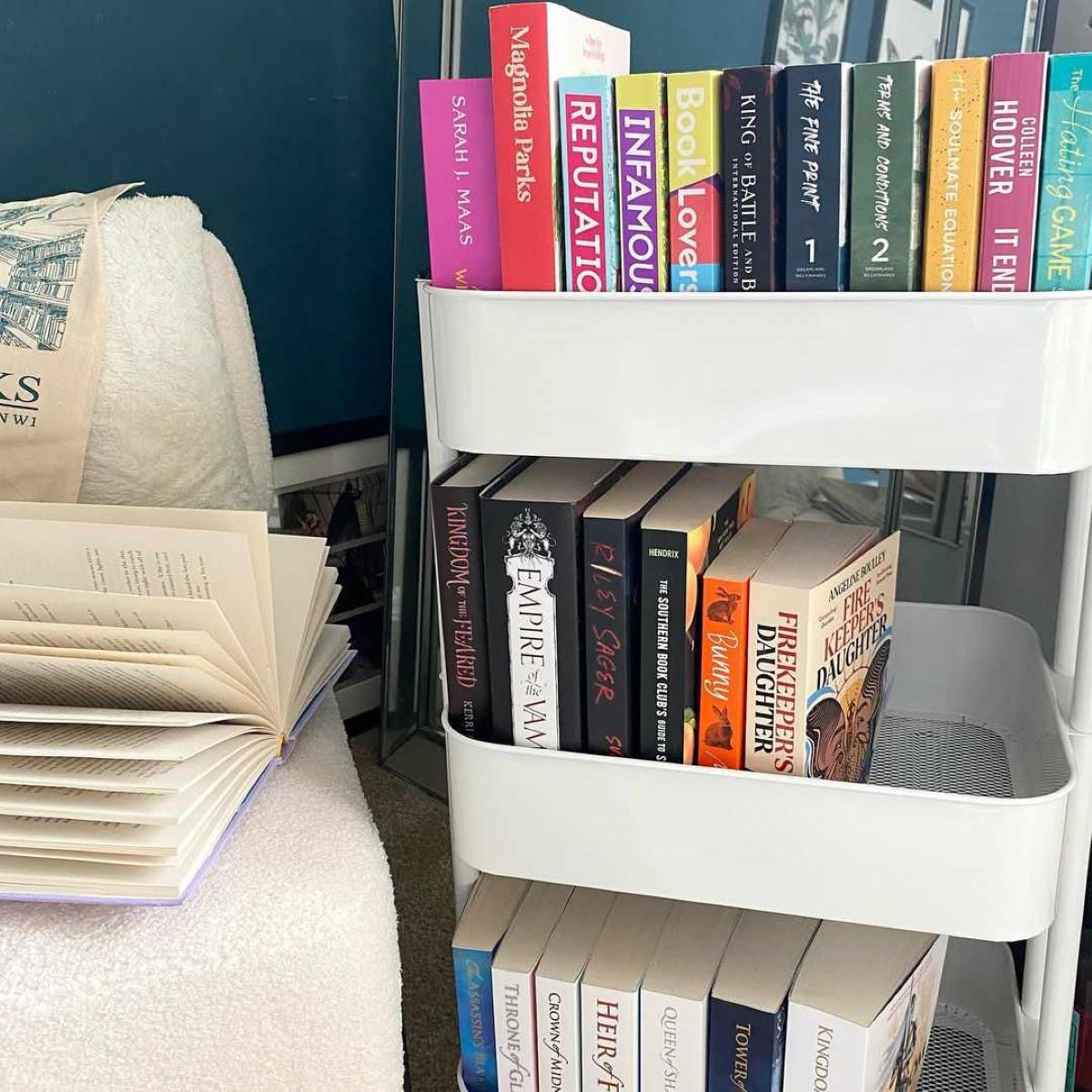

Articles
How To Store Books
Modified: January 19, 2024
Discover the best ways to store and protect your valuable articles with our comprehensive guide. Keep your books organized and in pristine condition.
(Many of the links in this article redirect to a specific reviewed product. Your purchase of these products through affiliate links helps to generate commission for Storables.com, at no extra cost. Learn more)
Introduction
Welcome bookworms and literature lovers! If you’re looking for tips on how to store your precious book collection, you’ve come to the right place. Whether you have a few treasured books or an expansive library, proper storage is crucial to ensure their longevity and keep them in tiptop shape.
Books are not just objects; they hold stories, knowledge, and memories. As such, it’s essential to handle them with care and provide a suitable environment for their preservation. In this article, we will guide you through the various aspects of book storage, from choosing the right space to organizing and maintaining your collection.
So, let’s dive in and embark on a journey to create an ideal storage system for your beloved books. With these tips, your collection will stay well-preserved and ready to be enjoyed for many years to come.
Key Takeaways:
- Create a sanctuary for your books by choosing the right storage space, organizing with care, and implementing protective measures. Preserve their value and enjoy a clean, well-maintained collection for years to come.
- Elevate your book storage game with digital cataloging, acid-free paper, and stylish arrangements. Protect your books from environmental damage and enhance their visual appeal while ensuring easy access and organization.
Read more: How To Store Old Books
Choosing the Right Storage Space
When it comes to storing books, choosing the right space is crucial. Here are some factors to consider:
- Temperature and Humidity: Books thrive in a stable environment with moderate temperature and humidity levels. Ideally, the temperature should be between 60-70 degrees Fahrenheit (15-21 degrees Celsius), and the relative humidity should be around 45-55%. Avoid areas with extreme temperature fluctuations or high humidity, such as basements or attics.
- Air Circulation: Good air circulation helps prevent mold and mildew growth. Choose a storage space with adequate ventilation to keep the air fresh and circulating.
- Light Exposure: Books are sensitive to light and can fade or become brittle when exposed to direct sunlight or bright artificial light. Opt for a storage area that is shielded from direct light, or use UV-protected window coverings.
- Security: Ensure that your chosen storage space is secure and protected from potential hazards like water leaks, pests, and fire. Consider installing a smoke detector or investing in fire-resistant storage options.
Based on these factors, you can consider storing your books in a clean and dry room inside your home, away from kitchens, bathrooms, or areas prone to moisture. Alternatively, you can explore the option of renting a storage unit specifically designed for book collections.
Remember, the goal is to provide a stable and controlled environment to protect your books from deterioration and damage. Choose a space that meets these requirements and provides peace of mind for your valuable literary treasures.
Cleaning and Preparing the Storage Area
Before you start organizing your books, it’s essential to clean and prepare the storage area to create a pristine environment. Here are some steps to follow:
- Clean the Space: Thoroughly clean the storage area, removing any dust, dirt, or debris. Vacuum the area, wipe down surfaces, and ensure that there are no lingering particles that could damage your books.
- Inspect for Pests: Check the storage space for signs of pests such as insects or rodents. They can wreak havoc on your book collection, so take proactive measures to eliminate any existing infestations and prevent future ones.
- Control Moisture: Ensure that the storage area is dry and free from moisture. Use a dehumidifier if necessary to maintain optimal humidity levels. Consider using moisture-absorbing products like silica gel packets or desiccant packs to prevent moisture buildup.
- Avoid Harmful Chemicals: Keep your books away from areas with strong chemical odors or fumes. Chemicals like paint thinners or cleaning agents can impact the condition of your books and cause discoloration or damage.
- Install Shelving: Invest in sturdy, book-friendly shelves or bookcases to store your books. Avoid using materials that may emit harmful gases, such as untreated wood or particleboard. Ensure the shelves are properly secured to prevent any accidents.
By taking these cleaning and preparation steps, you’ll create a safe and sanitary storage environment for your books. A clean and well-prepared space will not only protect your books but also make organizing and accessing them a much more enjoyable experience.
Organizing Your Books
Now that you have a clean and prepared storage area, it’s time to dive into the exciting task of organizing your books. Proper organization not only makes it easier to find specific titles but also helps maintain the overall condition of your collection. Here are some tips to effectively organize your books:
- Sort by Genre or Category: Begin by sorting your books into broad genres or categories, such as fiction, non-fiction, science fiction, biographies, etc. This will provide a general structure for your collection.
- Alphabetical Order: Within each genre or category, arrange your books alphabetically by the author’s last name. This will allow for easier browsing and locating specific books in your collection.
- Consider Subcategories: If you have a large collection within a specific genre, you can further organize them into subcategories. For example, within the fiction genre, you can have separate sections for mystery, romance, fantasy, and so on.
- Size and Format: Consider organizing your books by size or format, such as hardcovers, paperbacks, or oversized books. This can add an aesthetic appeal to your bookshelves and make them visually pleasing.
- Series or Authors: If you have a large collection of books from a specific series or author, it may be beneficial to keep them together for easier navigation and reading continuity.
- Personal Preference: Organize your books based on your personal preference. If you have a specific way in which you enjoy browsing your collection, go with a system that works best for you.
Remember to label your shelves or use book tags to clearly indicate the different sections. This will not only enhance the overall organization but will also make it easier for others to locate books or borrow from your collection.
By following these organization techniques, you’ll create a visually appealing and easily accessible book collection that will bring joy and satisfaction every time you delve into the world of literature.
Arranging Books Vertically
Arranging books vertically is the most common and traditional way to store and display your collection. Here are some tips for effectively arranging books in a vertical manner:
- Utilize Bookends: Bookends are essential for keeping your books upright and preventing them from falling over. Choose bookends that are sturdy and complement the overall aesthetic of your bookshelf.
- Evenly Load the Shelves: Distribute the weight of your books evenly across the shelves to avoid sagging or damage. Avoid overfilling the shelves, as it can lead to instability or difficulty in retrieving specific books.
- Leave Some Breathing Room: Allow for some space between the books and the edge of the shelf. This will make it easier to grab the books and prevent them from getting stuck.
- Vary the Heights: To add visual interest to your bookshelf, vary the heights of the books. Mix tall books with shorter ones to create a dynamic and appealing display.
- Group Books by Height or Color: Consider grouping books of similar height or color together to create a visually pleasing arrangement. This can be done within genres or as a separate display shelf for decorative purposes.
- Display Favorites Prominently: Showcase your favorite books or notable titles prominently by placing them on eye-level shelves or using book stands. This will draw attention to these special books and allow for easy access and admiration.
Remember to regularly dust off your books and bookshelves to keep them clean and well-maintained. Arranging books vertically not only maximizes the shelf space but also creates a sense of order and accessibility, making it easier to find and enjoy your favorite reads.
Read more: How To Store Antique Books
Stacking Books Horizontally
In addition to arranging books vertically, another option is to stack books horizontally. This method can add visual interest and give a unique touch to your bookshelf. Here are some tips for effectively stacking books horizontally:
- Create Sturdy Support: When stacking books horizontally, it’s important to create a sturdy foundation. Start by placing larger and heavier books at the bottom to provide a solid base.
- Avoid Overloading: Be cautious not to stack too many books on top of each other, as it can cause instability and increase the risk of books falling or getting damaged. Limit the stack to about four or five books for optimal stability.
- Alternate Directions: To add a stylish and visually appealing look, alternate the directions of the stacked books. This can be done by turning some books so that their covers face outward, while others have their spines facing outward.
- Create Layers: If you have multiple stacks of books, consider creating layers to add depth to your bookshelf. Place one stack of books slightly in front of another stack to create an eye-catching arrangement.
- Add Decorative Objects: To enhance the aesthetic appeal, consider adding decorative objects, such as small figurines, plants, or bookends, on top of the horizontal book stacks. This adds character and breaks up the monotony of the stacks.
- Use Stacking Accessories: If you want to ensure stability and prevent books from slipping, consider using stacking accessories like bookends specifically designed for horizontally stacked books. These can provide extra support and keep the stack from shifting.
While stacking books horizontally can offer an artistic and unique display, it’s essential to periodically check and rearrange the stacks. Over time, books may settle or become uneven, so regular maintenance is key to preserving the integrity of your collection.
Experiment with the placement, styling, and combination of vertical and horizontal arrangements to create a visually captivating and personalized bookshelf that reflects your love for books and your unique sense of style.
Using Bookends
Bookends are not just functional accessories; they also add a touch of style and charm to your bookshelf. Here are some tips on effectively using bookends to keep your books organized and visually appealing:
- Choose Sturdy Bookends: Select bookends that are sturdy enough to support the weight of your books. Consider materials like metal, wood, or stone, which provide both durability and aesthetics.
- Match Your Bookends: Coordinate your bookends with the overall theme or style of your bookshelf. Matching the color or material of the bookends with other decorative elements on your shelf creates a cohesive and visually pleasing display.
- Use Multiple Bookends: Depending on the length of your bookshelf, consider using multiple pairs of bookends to evenly distribute the weight and maintain stability. This also allows you to create sections or dividers within your collection.
- Organize Books by Theme: Utilize bookends to create distinct sections within your bookshelf. For example, you can use bookends to separate fiction from non-fiction, or divide books by genre, author, or any other criteria that suits your collection.
- Showcase Favorite Books: Use bookends to highlight your favorite books or those with sentimental value. Place them between the bookends to draw attention and create a focal point on your bookshelf.
- Experiment with Different Shapes and Designs: Bookends come in various shapes, sizes, and designs. Get creative and experiment with different styles that reflect your personal taste and enhance the overall aesthetic of your book collection.
Remember to position the bookends appropriately to ensure that they hold the books securely without causing any damage. Place them close to the ends of the books, leaving a small gap between the bookends and the cover to avoid any friction or potential wear.
Using bookends not only keeps your books organized and upright but also adds an element of style to your bookshelf. They are both functional and decorative, making them a practical choice for any book lover’s storage solution.
Store books in a cool, dry place away from direct sunlight to prevent damage from moisture and fading. Use bookends to keep them upright and avoid overcrowding shelves to prevent warping.
Avoiding Direct Sunlight and Moisture
Properly protecting your books from environmental factors like direct sunlight and moisture is crucial for their preservation. Here are some tips to help you safeguard your books:
- Avoid Direct Sunlight: Prolonged exposure to direct sunlight can fade book covers, cause discoloration, and deteriorate the paper. Keep your books away from windows or areas where they are exposed to direct sunlight. If your bookshelf is near a window, consider using UV-protected window coverings to filter out harmful ultraviolet rays.
- Control Indoor Lighting: Even indoor lighting can affect your books. Avoid placing your bookshelf directly under bright or harsh artificial light sources. It’s best to create a balanced lighting environment that provides enough visibility without adversely affecting your books.
- Prevent Moisture Damage: Moisture is one of the most damaging elements for books. Keep your books away from areas with high humidity, such as basements, bathrooms, or kitchens. Ensure that the storage area is dry and well-ventilated. If necessary, use dehumidifiers or moisture-absorbing products to maintain optimal humidity levels.
- Address Potential Leaks: Inspect your storage area for any signs of water leakage or dampness. Fix any leaks promptly to prevent water damage to your books. Additionally, avoid storing your books near pipes, sinks, or areas prone to water spills.
- Consider Climate Control: If you have a large book collection or live in an area with extreme temperature and humidity fluctuations, you may want to invest in a climate-controlled storage solution. These systems maintain stable temperature and humidity levels, ensuring the longevity of your books.
- Take Extra Precautions During Storage: If you need to store your books for an extended period, consider using archival or acid-free boxes that provide an extra layer of protection against moisture and light exposure. Place silica gel packets inside the boxes to absorb any excess moisture.
By avoiding direct sunlight and controlling moisture levels, you can significantly prolong the lifespan and condition of your books. Proper care and protection will ensure that your collection remains intact and ready for you to dive into the wonderful world of literature.
Wrapping Books in Acid-Free Paper
To provide an extra layer of protection for your books, consider wrapping them in acid-free paper. Acid-free paper is specifically designed to prevent deterioration and preserve the quality of your books. Here’s why and how to wrap your books:
- Prevention of Acid Migration: Standard paper contains acids that can transfer and cause damage to books over time. Acid-free paper, on the other hand, is made from neutral materials that do not deteriorate or release harmful chemicals.
- Protects Against Dust and Moisture: Wrapping your books in acid-free paper helps shield them from dust, moisture, and other potential contaminants that can affect their condition.
- Prevents Transfer of Ink or Stains: If you have books with fragile or easily smudged pages, wrapping them in acid-free paper can prevent transfer of ink or stains, keeping the pages clean and intact.
- Preserves Fragile Covers, Dust Jackets, and Hinges: Acid-free paper provides a protective barrier for delicate book covers, dust jackets, and hinges, minimizing the risk of damage and ensuring their longevity.
- How to Wrap Your Books: Start by laying your book flat on an acid-free paper sheet. Fold the paper over the book, paralleling the spine. Crease the edges neatly and tuck them securely inside the cover. Repeat the process for each book in your collection.
- Labeling Wrapped Books: To easily identify books that are wrapped, label the spines with small adhesive labels or write on the paper covering directly. This way, you can quickly locate specific books without having to unwrap each one.
When choosing acid-free paper, look for products that specifically mention their acid-free nature. Archival-quality paper, acid-free tissue paper, or acid-free book covers are all suitable options for wrapping your books.
By wrapping your books in acid-free paper, you provide an additional layer of protection against environmental factors and ensure the preservation of your cherished literary works for years to come.
Read more: How To Store Books In Bedroom
Using Book Sleeves or Dust Jackets
Book sleeves or dust jackets are invaluable tools for protecting your books’ covers from wear, tear, and other potential damage. These protective covers not only safeguard your books but also enhance their aesthetic appeal. Here’s why and how to use book sleeves or dust jackets:
- Preventing Wear and Tear: Book sleeves or dust jackets act as a shield, preventing scratches, stains, and other forms of wear and tear that can occur over time.
- Preserving Original Covers: If you have rare or valuable books with original covers, using book sleeves or dust jackets helps preserve their condition and maintain their authenticity.
- Enhancing Visual Appeal: Book sleeves or dust jackets often feature beautiful artwork or designs that can elevate the visual aesthetics of your book collection, making it more visually appealing.
- Easy Replacement: Should a dust jacket become damaged or lost, they can typically be replaced or repaired separately from the book itself, preserving the overall integrity of the collection.
- How to Use Book Sleeves or Dust Jackets: Slip the book into the book sleeve or slide the dust jacket onto the book, ensuring that the cover is fully covered and protected. Adjust the sleeve or jacket to fit snugly, so it doesn’t slip off or cause unnecessary friction.
- Conserving Rare or Delicate Dust Jackets: If you have particularly delicate or rare dust jackets that may be prone to damage even with a regular book sleeve, consider using archival-grade polyester sleeves. These offer optimal protection while allowing you to enjoy the beauty of the original artwork.
It’s important to note that not all books come with dust jackets, but many contemporary hardcover books do. If a book does not have a dust jacket, you can still use book sleeves to protect the covers from wear and tear.
By using book sleeves or dust jackets, you can safeguard your books’ covers, preserve their value, and add an extra layer of visual appeal to your collection. Your books will stay protected for years to come, and their covers will remain as pristine as the day you acquired them.
Implementing a Digital Catalogue System
Managing a large book collection can be a daunting task, especially when it comes to keeping track of titles, authors, and other important details. That’s where a digital catalogue system can be immensely helpful. Here’s why and how to implement a digital catalogue system for your book collection:
- Efficient Organization: A digital catalogue allows you to organize your book collection in a systematic and efficient manner. You can categorize books by genre, author, publication date, or any other criteria that suits your collection.
- Easier Searching and Browsing: With a digital catalogue, you can quickly search for specific books or authors, saving you time and frustration. It also enables easy browsing and exploration of your collection based on specific criteria.
- Track Reading Progress: Some digital catalogue systems allow you to track your reading progress, whether it’s marking books as read, tracking current reads, or setting reading goals.
- Sync Across Devices: Many digital catalogue platforms offer synchronization across multiple devices, allowing you to access your book collection on your computer, smartphone, or tablet wherever you go. This ensures that your catalogue is always up to date and accessible.
- Add Descriptions and Notes: Digital catalogues often provide the option to add descriptions, notes, or reviews for each book. This can be useful for noting your thoughts, favorite quotes, recommendations, or any other information you’d like to associate with a particular book.
- Explore Book Recommendations: Some digital catalogues offer personalized book recommendations based on your reading history and preferences, helping you discover new titles that may pique your interest.
- Popular Digital Catalogue Platforms: There are several digital catalogue platforms available, such as Goodreads, LibraryThing, and Book Catalogue. These platforms offer user-friendly interfaces, access to extensive book databases, and often provide additional features like barcode scanning for easy book entry.
To implement a digital catalogue system, begin by choosing a platform that suits your needs. Create an account, and start adding your books to the catalogue. You can manually enter book details or utilize features like barcode scanning to quickly input book information.
Take some time to explore the features of the digital catalogue platform you choose. Customize your catalogue, add personal tags or labels, and make use of the various options available to optimize your book management experience.
A digital catalogue system not only simplifies the organization and tracking of your book collection but also enhances your reading experience by providing personalized recommendations and insights. Give it a try, and discover a whole new level of book organization and enjoyment.
Regularly Dusting and Cleaning Books
Keeping your books clean and free from dust is essential for their longevity and maintaining their overall condition. Regular dusting and cleaning help prevent the accumulation of dirt, allergens, and other contaminants. Here are some tips for effectively dusting and cleaning your books:
- Use a Soft, Dry Cloth: Start by gently wiping the surface of each book with a soft, dry cloth. This helps remove loose dust and debris without causing any damage to the book cover or pages.
- Pay Attention to Nooks and Crannies: Use a soft-bristled brush or a clean, dry paintbrush to gently remove dust from hard-to-reach areas, such as the spine, corners, and edges of the book.
- Consider a Vacuum Cleaner Attachment: If you have a large book collection or want to ensure a thorough clean, use a vacuum cleaner with a soft brush attachment to gently suction away dust from the book covers and pages. Keep the vacuum on a low setting to avoid any potential damage.
- Spot Clean Stains or Spills: If you encounter stains or spills on your books, act quickly but with caution. Use a clean, slightly damp cloth to gently blot the affected area. Avoid rubbing or applying excessive moisture, as it can potentially damage the book’s pages or cover.
- Avoid Liquid Cleaners: Unless absolutely necessary, it’s best to avoid using liquid cleaners on your books. Moisture can cause paper to warp, pages to stick together, or ink to bleed. Reserve liquid cleaners for stubborn stains or special situations, and always test them on a small, inconspicuous area first.
- Take Extra Care with Fragile Books: For antique or fragile books, consult with a professional book conservator or specialist before attempting any cleaning. They can provide specific guidance and techniques to preserve the delicate nature of these books.
It’s important to note that while regular dusting and cleaning are beneficial, excessive handling of books can also lead to wear and tear. Always handle books with clean hands, and avoid eating or drinking while reading to prevent accidental spills or stains.
By regularly dusting and cleaning your books, you not only improve their appearance but also ensure their long-term preservation. Keep your collection looking its best, and enjoy the pleasure of reading your books in a clean and well-maintained condition.
Conclusion
Congratulations! You’ve reached the end of our comprehensive guide on how to store and care for your precious book collection. By implementing the tips and techniques outlined in this article, you can ensure that your books remain in excellent condition and bring you joy for years to come.
We started by emphasizing the importance of choosing the right storage space, including considerations such as temperature, humidity, air circulation, light exposure, and security. A suitable storage environment is essential for preserving the integrity of your books.
We then explored the steps for cleaning and preparing the storage area, creating a clean and safe space to house your cherished books. Keeping pests at bay, controlling moisture, and avoiding harmful chemicals are all important aspects of maintaining an ideal storage area.
Organizing your books is the next vital step. Sorting books by genre or category, arranging them alphabetically, and considering subcategories or personal preferences will help you create an organized and visually appealing collection.
We also discussed different methods of arranging books, both vertically and horizontally, and the use of bookends to provide stability and add a touch of style. Additionally, we explored the benefits of using book sleeves or dust jackets to protect your books’ covers and enhance their aesthetic appeal.
Preserving the condition of your books involves taking proactive measures such as avoiding direct sunlight and moisture, wrapping books in acid-free paper, and regularly dusting and cleaning your collection. These practices ensure that your books stay in excellent shape and maintain their value over time.
Lastly, we explored the advantages of implementing a digital catalogue system to efficiently manage and track your book collection. Such systems provide easy access, personalized recommendations, and the ability to track your reading progress.
Remember, your book collection is more than just a compilation of titles; it holds knowledge, stories, and memories. By following these guidelines, you’ll be able to protect and appreciate your books, transforming your storage area into a sanctuary for literature.
So, go ahead and put these tips into practice. Create a storage space that’s tailored to your collection’s needs, organize your books in a way that suits your style, and enjoy the pleasure of reading in a clean and well-maintained environment. Happy reading!
Frequently Asked Questions about How To Store Books
Was this page helpful?
At Storables.com, we guarantee accurate and reliable information. Our content, validated by Expert Board Contributors, is crafted following stringent Editorial Policies. We're committed to providing you with well-researched, expert-backed insights for all your informational needs.


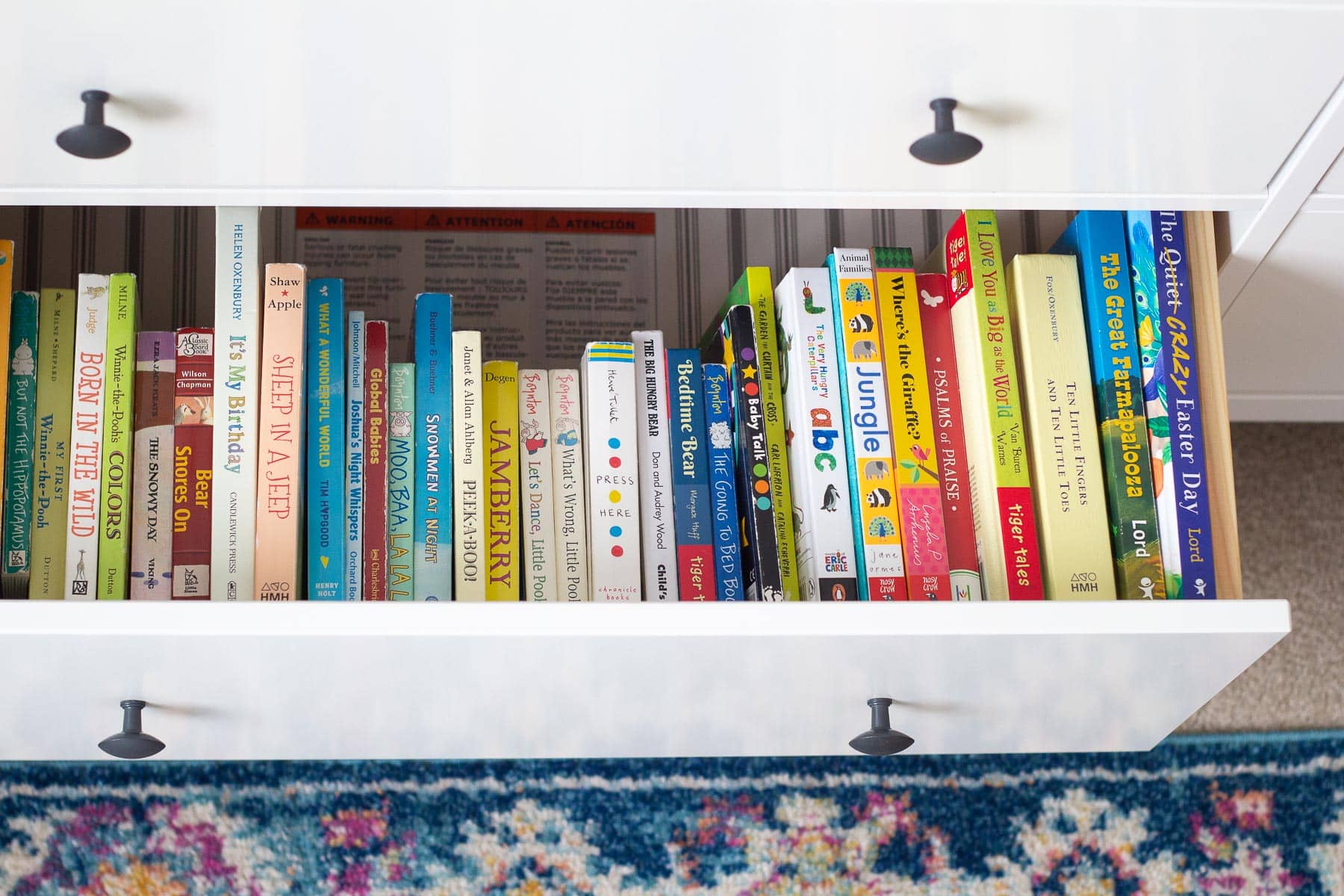


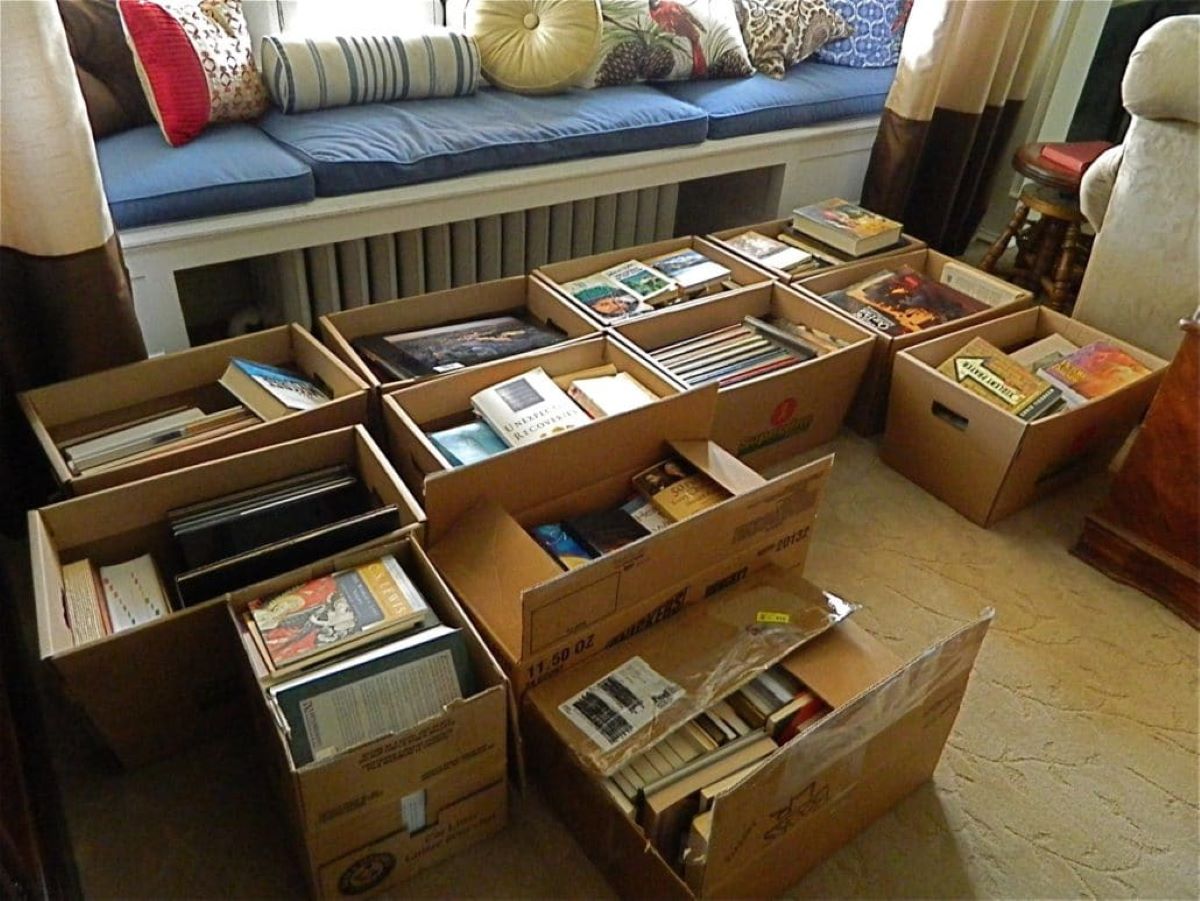
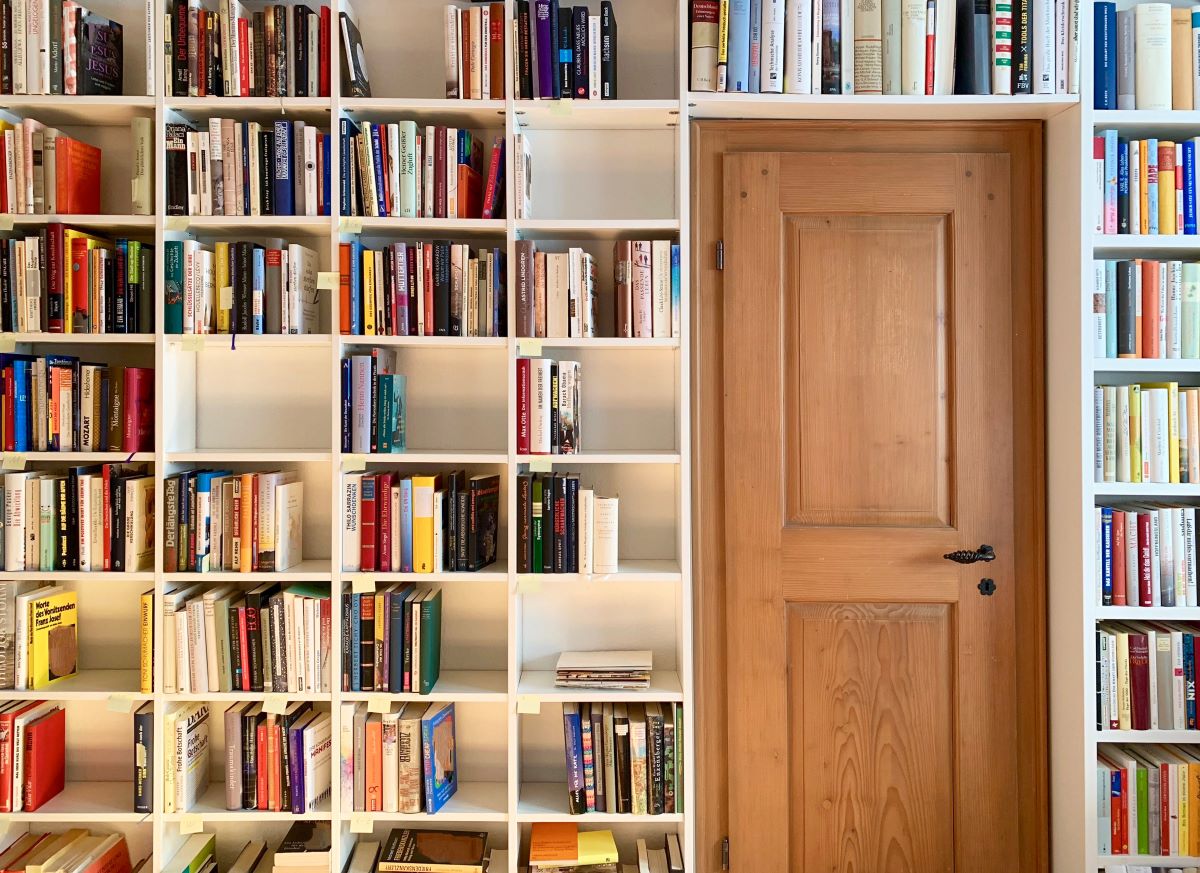


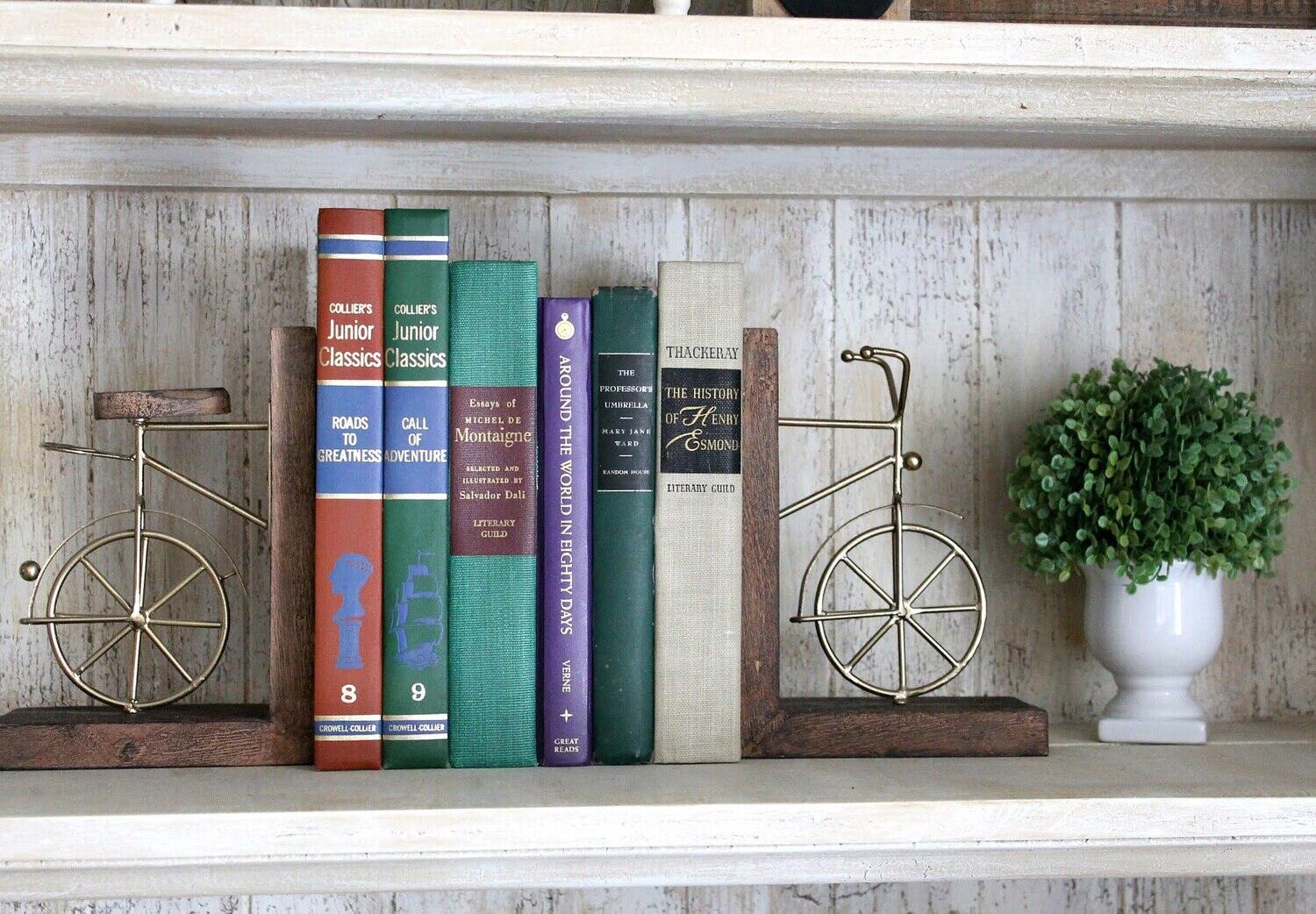




0 thoughts on “How To Store Books”